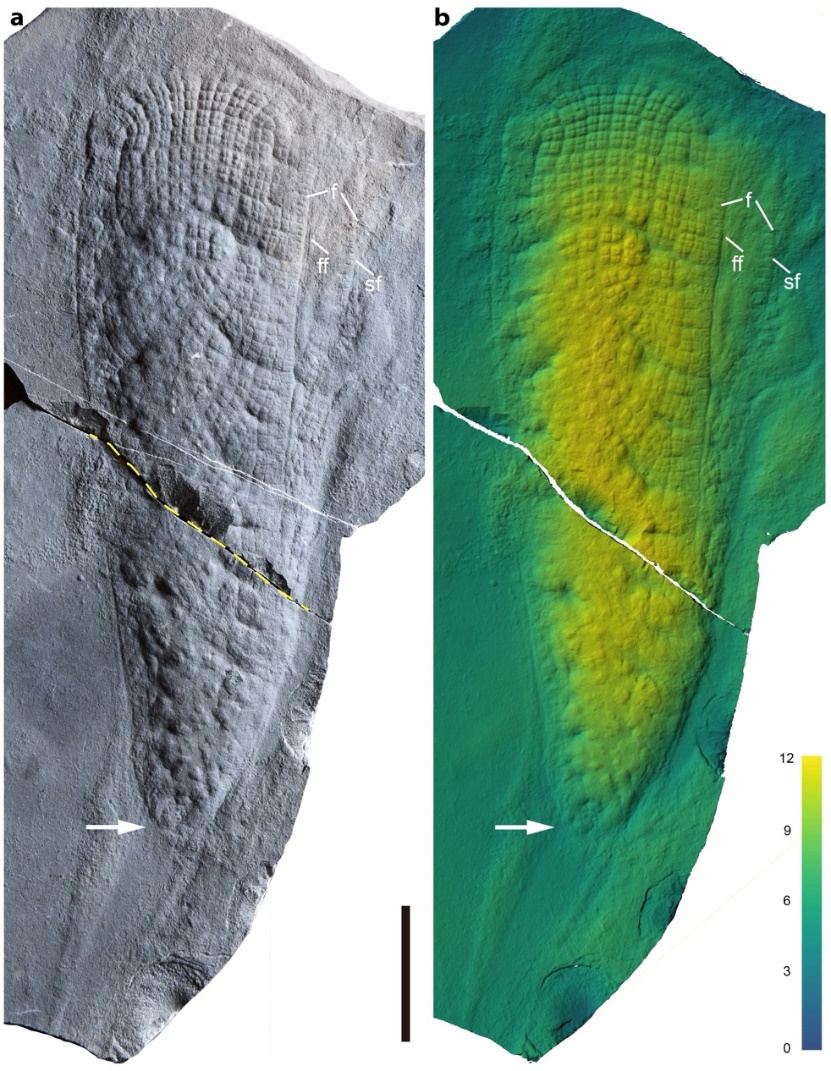June 12. () –
Chinese paleontologists have discovered a late Ediacaran terminal group sponge, Helicolocellus, in a fossil biota that It dates back to about 550 million years ago.
This finding, which fills an important gap in the early evolution of sponges and may become a ‘Rosetta stone’ for animal evolution, is published in ‘Nature’.
The discovery of Helicolocellus establishes a bridge between Ediacaran and Cambrian fossil assemblagesindicating that the Ediacara biota has evolutionary links with Cambrian animals, according to the authors of the research, led by Yuan Xunlai, from the Nanjing Institute of Geology and Paleontology.
Sponges are often considered the most basal and primitive phylum of metazoans. Early sponge fossils may provide important clues to the origin and early evolution of animals. Molecular clock estimates and controversial biomarker data suggest sponges should have appeared about 700 million years ago, reports the Chinese Academy of Sciences.
However, it is enigmatic that no unequivocal sponge fossils were found before the Cambrian Period (about 539 million years ago). Therefore, there is a 160 million year gap in the sponge fossil record, a period in early sponge evolution known as the “lost years.”
Two competing hypotheses have been proposed to explain the absence of Precambrian sponges: one hypothesis holds that, since most extant sponges have siliceous or calcareous spicules, the common ancestor of sponges also had mineralized spicules. According to this hypothesis, the absence of Precambrian sponge fossils can be attributed to poor conservation potential due to the chemical composition of the interstitial waters.
The other hypothesis maintains that the common ancestor of sponges were non-biomineralizing animals. Only after the appearance of the main classes, they independently developed biomineralized spicules. Therefore, early Precambrian sponges lacked spicules, which made its conservation and identification in the fossil record difficult.
The newly discovered Helicolocellus displays morphological features similar to those of glass sponges (Hexactinellida), such as a radially symmetrical conical body, a discoidal attachment structure, a possible central cavity, and inferred excurrent canals. Furthermore, the surface of Helicolocellus consists of regular boxes, each of which is divided into four similar but smaller boxes, which in turn are subdivided into even smaller ones.
This unique grid pattern is also found in some typical Paleozoic hexactinellids. Their shapes and structures are very similar; However, the grids in Helicolocellus are made of organic matter, while the grids in Paleozoic sponge fossils are made of biomineralized spicules. This study suggests that Helicolocellus may represent an early sponge without biomineralized spicules.
To further test this interpretation, the researchers constructed a morphological data matrix containing several extant and fossil animals. and performed a rigorous phylogenetic analysiseither. The results show that Helicolocellus belongs to the terminal group of sponges (which contains all selected living organisms, their closest common ancestor, and all groups already extinct but derived from that same closest common ancestor) and is closely related to the hexactinellids.
The discovery of Helicolocellus indicates that non-biomineralizing sponges existed in the Precambrian. It suggests that modern sponges should not be used as the only guide to finding Precambrian sponge fossils, as early sponges may not have had biomineralized spicules and may not have had all the characteristics of modern sponges. Furthermore, early hexactinellid sponges first established the reticulated skeletal plane using organic material, and then they added siliceous biominerals to the recipe for skeletal formation in the Cambrian.
The fossil assemblages on both sides of the Ediacaran-Cambrian boundary are extremely disparate. The Ediacaran Period is dominated by the enigmatic and phylogenetically unknown Ediacaran Biota, while in the Cambrian, modern marine ecosystems begin to take shape with the emergence of extant animal phyla.







![[Img #74693]](https://thelatestnews.world/wp-content/uploads/2024/12/Give-a-second-life-to-your-mobile-with-iLevante-150x150.jpg)



![[Img #74693]](https://thelatestnews.world/wp-content/uploads/2024/12/Give-a-second-life-to-your-mobile-with-iLevante-300x200.jpg)

Add Comment